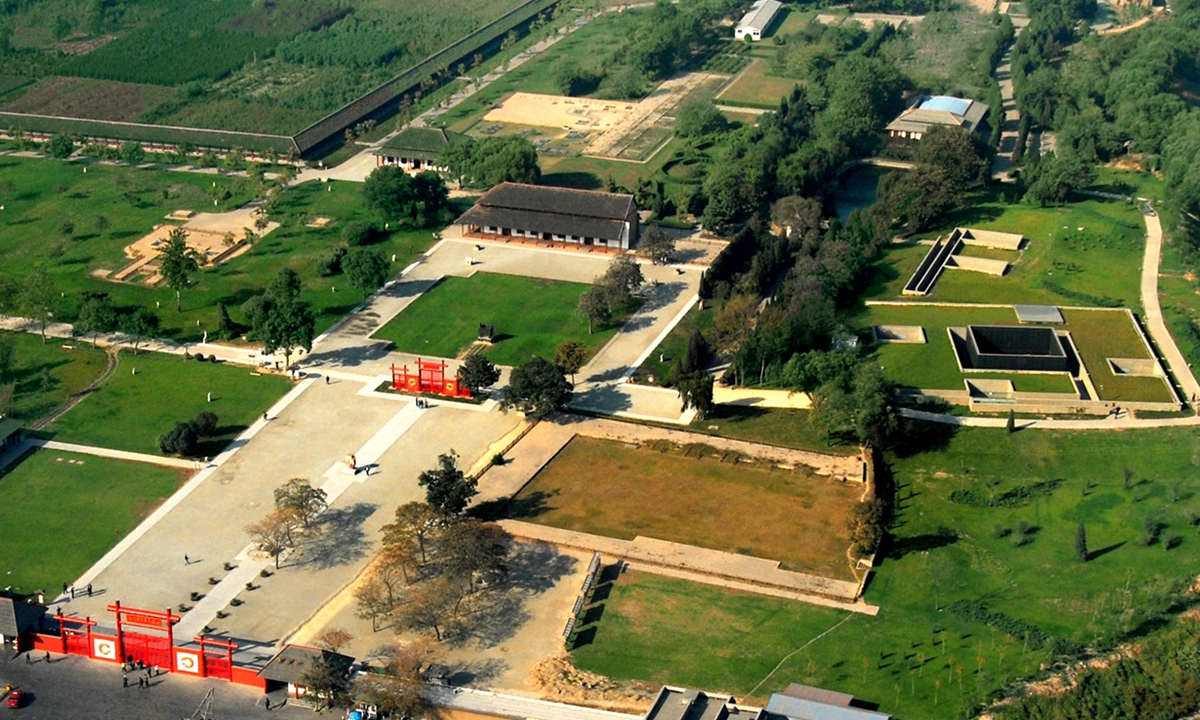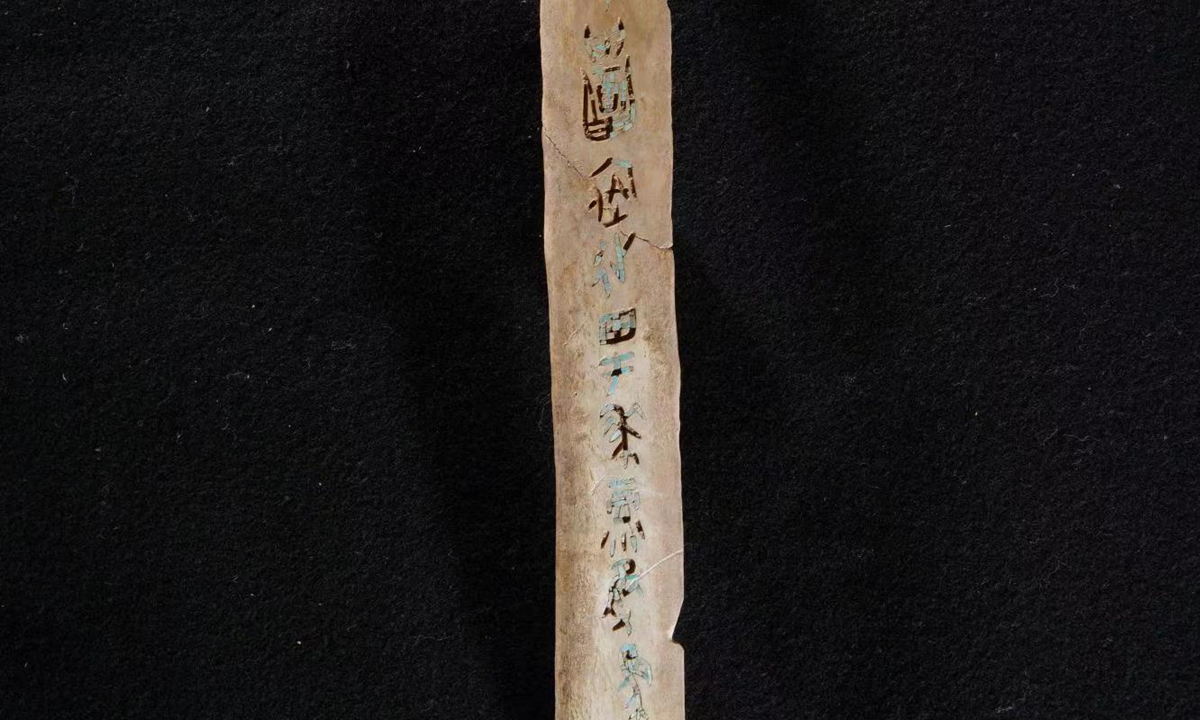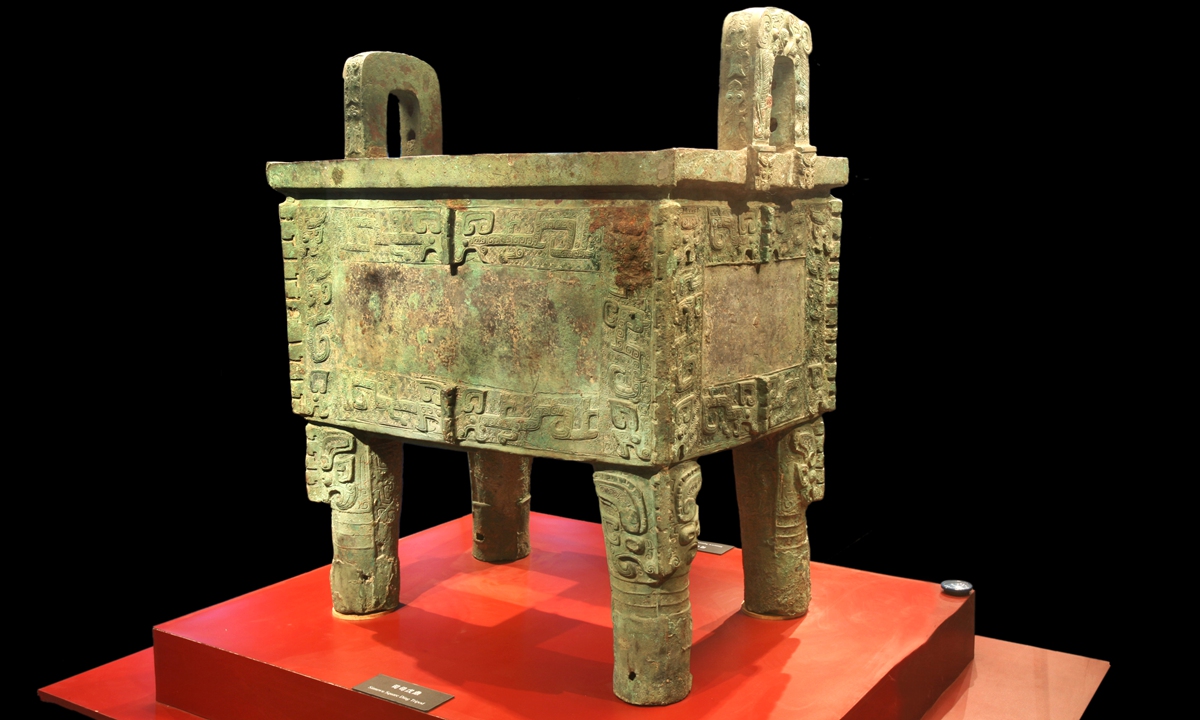ARTS / CULTURE & LEISURE
Yinxu Museum preserves early secrets of Chinese characters
Mysterious inscriptions

A view of the Yinxu Museum Photo: Courtesy of the Yinxu Museum
Editor's Note:Through the continuous efforts of several generations of Chinese scholars, major research projects, such as the Project to Trace the Origins of Chinese Civilization, have shown that China's history includes 1 million years of human evolution, 10,000 years of culture and more than 5,000 years of civilization.
Thousands of museums across the country are like stars lighting up the Milky Way that is China's more than 5,000-year-old civilization with their rich collections and exhibits.
In this series, the Global Times will introduce 10 museums from across the breadth and width of China, exploring their contributions to China's diverse, inclusive and continuous civilization.
This second installment of the series brings you to Anyang, Henan Province.
The Yinxu Museum in the heart of China's "Central Plains" preserves the cultural relics that are essential to making "Chinese culture" Chinese.
In 1899, an official from the Qing Dynasty (1644-1911) came across some mysterious inscriptions carved on some "dragon" bones being sold in a shop, thus pushing back the origin of the Chinese writing system to some 3,300 years ago.
Home to the remains of oracle bone inscriptions, the Yinxu Ruins in Anyang, Central China's Henan Province, have become known as the "hometown of China's ancient characters."
Being one of China's oldest archaeological sites, the ruins, originally excavated by Chinese archaeologists in 1928, were once the city of Yin, the last capital of the Shang Dynasty (c.1600BC-1046BC). The inscriptions on the oracle bones discovered within the ruins are some of the oldest Chinese characters found to date.
"Discovering and pinpointing the Yinxu site was the starting point and foundation of exploring the cultures of the Xia (c.2070BC-c.1600BC) and Shang dynasties, and tracing the origins of Chinese civilization," Wang Wei, chief expert of a national project to trace the origins of Chinese civilization and president of the Chinese Society of Archaeology, told the Global Times.
"Because of the Yinxu Ruins, China's history can be traced back to the Shang Dynasty. More importantly, with the Yinxu Ruins as the fulcrum, a time-space system of Xia and Shang archaeological culture was able to be constructed, providing an important starting point for exploring earlier civilizations," said Zhao Qingrong, the curator of the Yinxu Museum.
The Yinxu Ruins were added to the UNESCO World Heritage List in 2006.
To make ancient characters come "alive," the museum has launched a lot of activities over the years, such as an exhibition scheduled for the upcoming International Day for Monuments and Sites on April 18, Zhao said.
Exhibitions about the Oracle bone script explore the life of ancient China, including architecture, food, vegetation, animals, weather, and transportation, giving visitors a clear understanding of the inscriptions on the oracle bones and helping them realize the profound nature of traditional Chinese culture.
According to Zhao, through a raft of interactive displays, exhibitions and lectures, tourists can enhance their historical conservation awareness and get to know more about the Yinxu Ruins and Shang culture.
To get a better insight into the remarkable achievements of early Chinese civilization, the museum staff picked two cultural relics they consider to be the key highlights of the museum, allowing visitors to appreciate the profound history of China.

The oracle bone script preserved in the Yinxu Museum Photo: Courtesy of the Yinxu Museum
Ancient writing systemInscriptions on oracle bones found at the Yinxu Ruins bear invaluable testimony to the development of one of the world's oldest writing systems and China's ancient beliefs and social systems.
Over the past 120 years since they were discovered, generations of Chinese scholars have continued to explore their secrets and interpret the ancient code of Chinese civilization.
Oracle bones were used during divination rites and ceremonies to worship the gods held by the royal court of the late Shang people. The content of the inscriptions give a picture of the politics, military affairs, culture, social customs, astronomy, calendar and medicine of the Shang Dynasty.
Around 160,000 oracle bones have been found so far, but of the 4,300 characters identified so far, only 1,600 have been decoded.
"Oracle bone inscriptions not only greatly enriched Shang culture, but also moved the written history of Chinese civilization back by about 1,000 years. The Chinese characters that evolved from them have become the carrier of Chinese civilization and are one of the most powerful cultural genes to maintaining the unity of the Chinese people," Zhao said.

The Houmuwu Ding unearthed from the Yinxu Ruins Photo: Courtesy of the Yinxu Museum
Heaviest bronze relicThe Yinxu Ruins testify to the golden age of early Chinese culture, handicrafts and sciences, a time of great prosperity in the Bronze Age. Compared with other ancient civilizations around the world, the bronze culture of the Yinxu Ruins has distinct Chinese characteristics.
Based on bronze ritual vessels, the culture developed a complicated etiquette system with hierarchy at its core. Full of unique Asian characteristics, the system lasted for thousands of years in China.
The huge bronze cauldron known as the Houmuwu Ding (a type of food vessel) unearthed in the Yinxu Ruins is a treasure of Chinese bronze culture and the most famous sacrificial bronze in the world.
Weighing a total of 875 kilograms, the square vessel is 133 centimeters high, while the diameter of its rim is 79.2 centimeters, making it the heaviest ancient bronze in the world. As a sacrificial vessel cast as a burial tribute, it was likely commissioned by a young prince for his deceased mother some 3,000 years ago.
This item is huge and majestic in shape, with exquisite and detailed decorations. The whole body is decorated with ancient patterns such as the Chinese mythological creature known as taotie, giving people a sense of stability, solemnity and mystery. It represents the highest level of ancient Chinese bronze culture, according to the official website of the museum.

